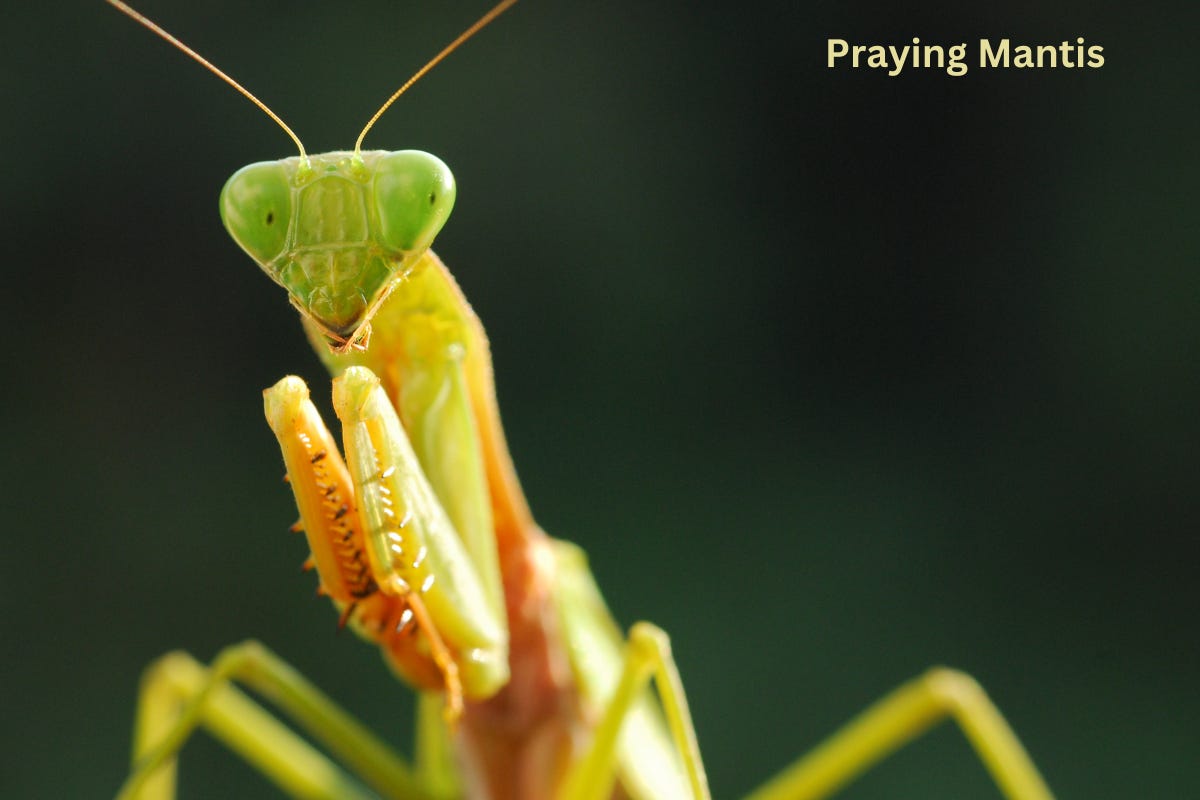Wild Insights Extra: The incredible Praying Mantis
The highly predatory, and sometimes cannibalistic insect with some amazing skills
By Annette J Beveridge
The praying mantis is a fearsome predator and once seen, is never forgotten. With its triangular head and irregular movements, these unique-looking insects have a distinctive hunting pose with the front legs folded as if in prayer hence the name.
These are fascinating insects.
Praying mantis are carnivorous insects with incredible hunting skills. They feed upon flies, grasshoppers, crickets, aphids, and yes, will even take smaller mantises.
I have seen and heard them munching loudly on their food and when living in France, even had the privilege of one appearing in the cat’s food bowl inside the house.
My first encounter with a mantis was when hiking down a mountain in Spain. Walking wearily down the slopes, it was an extremely hot day so when I heard a strange noise, I stopped.
Searching, I found a partially-hidden mantis on a rocky cleft. As I neared it, I could hear the distinctive crunching sound and watched it hold a cricket tightly in its forelegs. What a discovery. It didn’t seem to care that I was watching it snack.
These are stalk and ambush predators. When they strike, it takes milliseconds. Prey is gripped by its forelegs (raptorial legs). There are interlocking spines on the second and third sections which means once the mantis has ensnared its prey, escape is impossible.
These insects are fairly common throughout Europe and may even be heading to mainland Britain due to climate change.
Here’s some great facts……
Anatomy
Mantises have specialised mouthparts and sharp mandibles. Once a prey item has been consumed, special enzymes begins to break down the tissues of the body.
There are several segments on the abdomen for the digestive system, excretory system, and reproductive system.
The thorax has three segments which enables flexibility of movement. The hardened forewings enable good camouflage as they are similar to leaves or the bark of a tree. When feeling threatened, the elongated wings flash to show the hindwings revealing a sudden splash of colour. This will be used to attract a mate too.
For respiration, mantises have a unique system.
Keep reading with a 7-day free trial
Subscribe to One Planet News to keep reading this post and get 7 days of free access to the full post archives.





